At CTI, we have been helping our clients harness the power of marketing analytics to grow revenues. There is no shortage of customer centric data, but the real trick is the ability to bring all the data points together in a cohesive and useful manner this is actionable. It is truly a big data challenge across the entire customer lifecycle.
Today, I would like to talk about an important, yet often mysterious marketing quandary; measuring attribution. Marketing attribution, where we attempt to associate revenue to a marketing touchpoint, has forever been a source of challenge and ambiguity for marketers. However, modern technologies such as AI and Machine learning(ML) are dramatically changing the marketing attribution paradigm. When your company is organized by channel, each channel wants a piece of the revenue pie. I have seen many organizations struggle with what is right for them. Here are some attribution models and their inherent flaws:
| Last Touchpoint Model – the last interaction receives 100% of the credit for the conversion i.e. email click. This has its challenges because the customer may click on an older email, yet we have recently sent them a new one that they have opened. Explicit attribution would associate it to the clicked email, not the last email received. What about the true interaction that obtained the prospective customer? The channel fighting begins. | 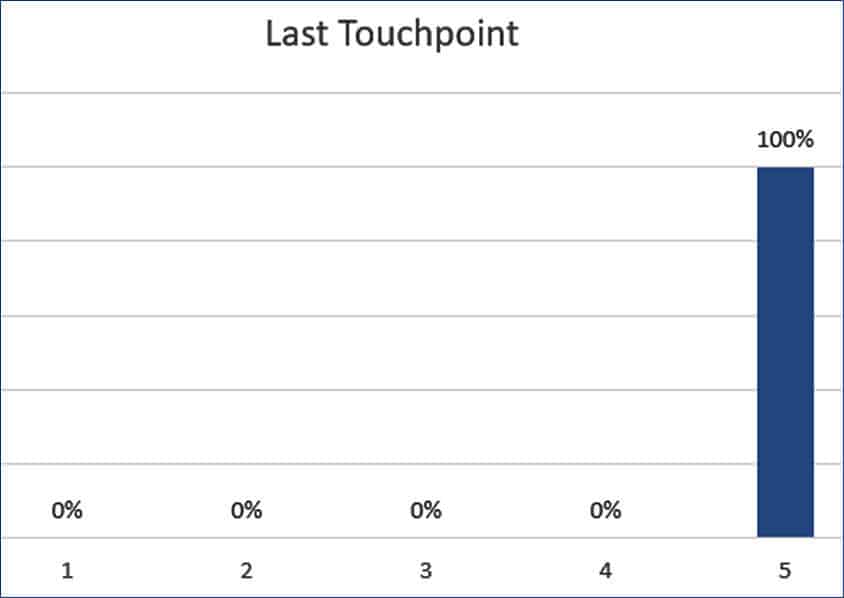 |
|
First Touchpoint Model – the first interaction receives 100% of the credit for the conversion (i.e. affiliate network ad). You are then always questioning whether all the other subsequent touchpoints have some value. Could look at the value of first and last at full credit? Sure, but you are leaving behind other attributes, such as television, radio, and catalog to name a few in this example.
|
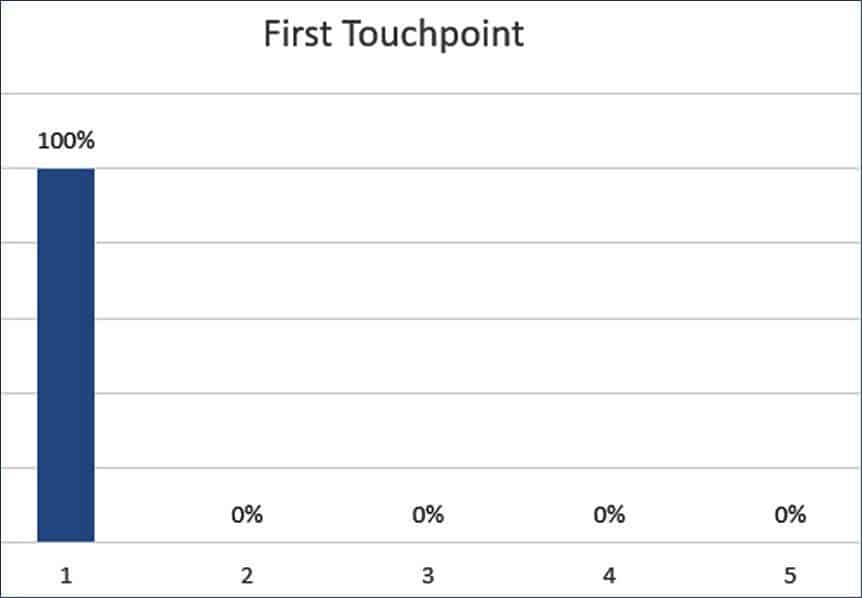 |
|
Linear Touchpoint Model – ascribe each touchpoint in the customer journey to a conversion value. (e.g.. Paid Search, Email, Direct Mail, Social and Text would each receive 20% of the conversion). The challenge with this model is you need to create rules to address the longitude of the customer journey, which can be cumbersome given the potential combination of paths.
|
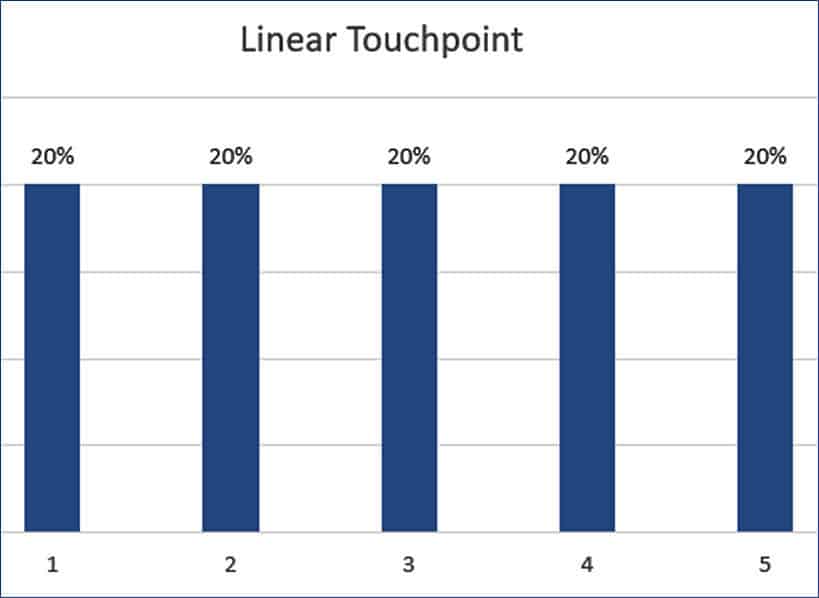 |
|
Time Decay Touchpoint Model – measures the number of interactions and decrements the weight from the last touchpoint (being the largest weight) to the first touchpoint (being the smallest weight). This in my opinion makes more sense than the linear model. But has its flaws, because that first interaction is what initially attracted them to your brand.
|
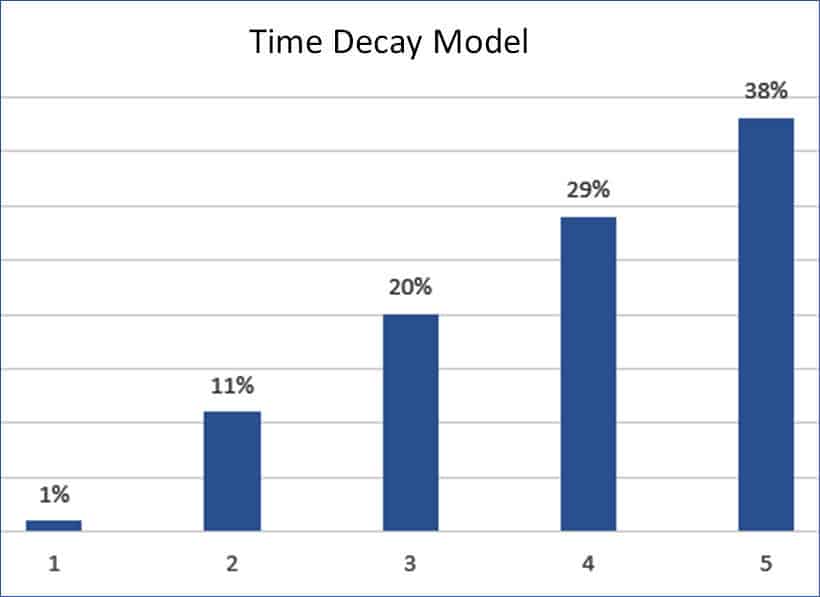 |
|
Position Based Touchpoint model – I like to call this the Goalpost Model. This model attributes 40% of the credit to the first and the last interaction and the remaining 20% is distributed evenly to all the touchpoints interactions in the middle. This model is nice because it gives more credit for how the customer was initially acquired and what it took to convert, with some credit for those touchpoints in between.
|
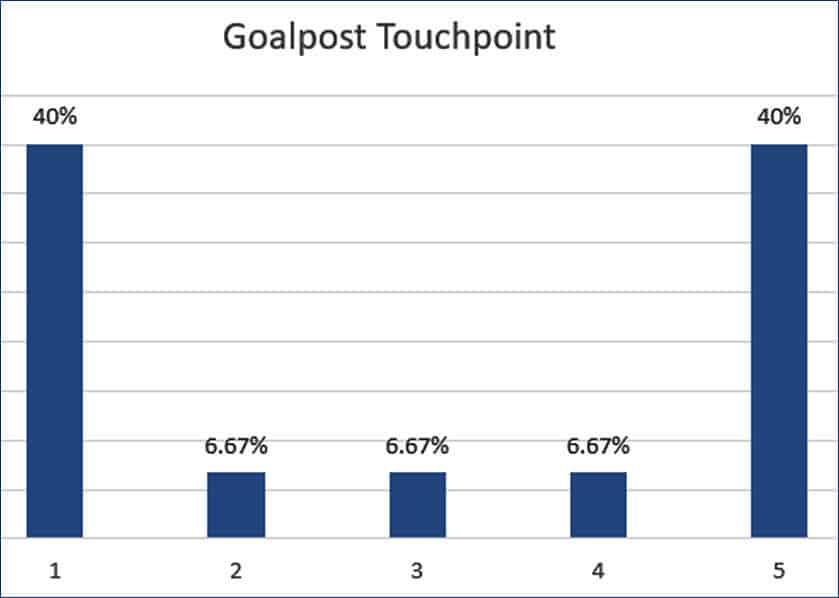 |
Given the many combinations of touchpoint paths that a customer may take, we now need rules to consider touchpoint time and type to lead to a functional, custom attribution model. Traditionally, we have built a model that looks at these pathways. The downside is this is a time and resource intensive effort to build the model. Additionally, this custom model typically requires ongoing enhancements, driving up the support costs. Don’t get me wrong, this is a tried and true best practices method. But this is where AI and Machine learning are disrupting conventional wisdom in the marketing attribution paradigm.
Machine learning is not new, despite the recent hype. It has been around for years, introduced by Arthur Samuel in 1959 while he was at IBM. With the enormous amount of digital data available today, we see a more prevalent trend in the usage of machine learning to understand customer behavior to better predict revenue outcomes.
For example, our model, the CTI CustomerUniverse, is a 360-degree view of the customer that is ideal for consumption on machine learning. Our model has the necessary data sets that can be “trained” based on an outcome we are trying to achieve. These outcomes may predict the next best offer or optimize a buying path. This is turning the marketing attribution model on its side. Essentially, allowing the machine to learn what is the best customer journey given the customer profile and allowing the machine to determine which touchpoints are most relevant along the path. Meaning we don’t have to fret about which type of attribution model is needed to deploy, ML will naturally start to build out a custom model optimized to a target revenue outcome.
We can now look at the patterns of customer engagement and score them based on successful outcomes:
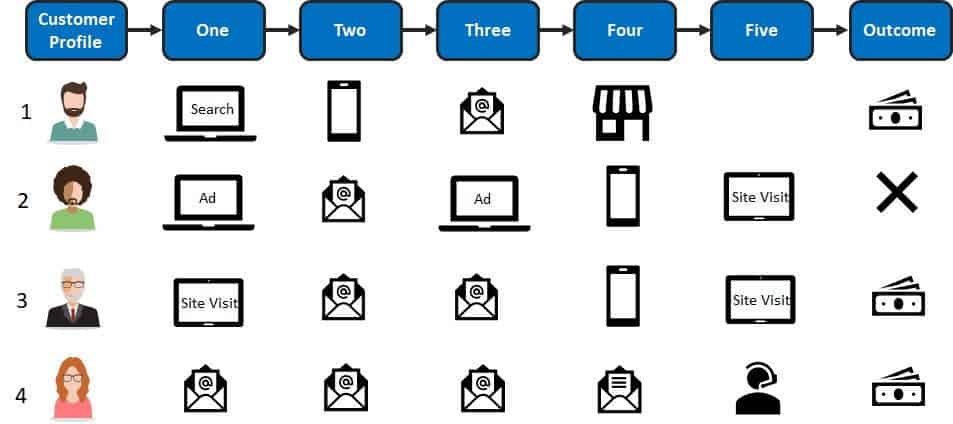
In scenario 1, it was 4 interactions, search, SMS and email before they made a purchase in store.
In scenario 2, it was 5 interactions, site ad, email, site ad, SMS and site visit with no outcome.
In scenario 3, it was 5 interactions, site visit, email, email, SMS and site visit with a purchase.
In scenario 4, it was 5 interactions, email, email, email, direct mail and a call center purchase (yes people still call the 800 number on that catalog).
Now imagine this for a million transactions. Traditional marketing attribution models would be associating revenue in a skewed manner at the time everyone accepted. This results in channels fighting for their piece of revenue and ultimately leaving management unclear of what interaction truly impacted revenue. With machine learning, you can use the customer profile and the customer touchpoints to more accurately model outcomes. Marketers can now be more prescriptive as a customer heads down the path in relation to what products to offer, at what price and projected potential revenue.
We are not worried about where to attribute the revenue, but how best to attribute the customer path with a revenue outcome.
Machine learning takes big data to the next level for marketing attribution, which historically relied on a flawed model to get to an acceptable return on investment. The combination of the machine learning and solid model framework (such as CTI’s CustomerUniverse) can help you take what was a fragmented puzzle to a holistic, actionable plan to target customers more effectively.
Machine learning lets you realize revenue growth in a more efficient way. It is forever changing how we make decisions, some of which is driven by the models. It makes one-to-one marketing that much easier, as we can have highly personalized touchpoints that shape the customer behavior to a positive revenue outcome.